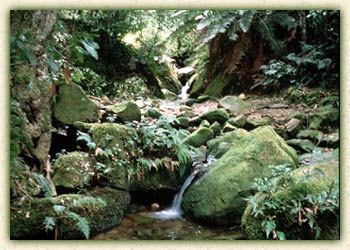The countries that emit a lot of greenhouse gases will pay the countries on the equator money that will be used to preserve the rain forest which, among other things, helps absorb carbon dioxide

The basis of the idea for trading is in the point of view of the entire earth as an organic unit where it is less important where the carbon comes from and more important its overall amount, (reducing the amount reaching the atmosphere). The trade is carried out mainly through the World Bank, but also directly between countries, cities, countries and industrial plants in the whole world (those that sign the Kyoto Convention). So much for things that have been known and accepted for a long time.
According to the World Bank - every ten years the world loses about 5% of rainforests. The loss of forests "contributes" 20% of all carbon emissions. In most cases, forests are cut down in order to clear land for agriculture or grazing, and according to the bank's experts - the economic value of a forest is ten times greater than the same area that will be used for agriculture or grazing, when the calculation relies on the forest as a natural resource as well as a carbon "absorber".
In accordance with this calculation, in order to save the rain forests while adhering to carbon trading, the World Bank proposes that industrialized countries pay for their carbon surplus to developing countries by financing projects to preserve and renew forests - preventing felling and planting and afforestation operations. Such an activity would be in accordance with the Kyoto Convention since forests are considered carbon sinks and therefore planting forests is equivalent to selling excess emissions.
Since the rainforest areas, most of them are in "developing countries", the basis of the idea is that industrial countries that emit above the cap will pay the countries that have forests, payments that will be used for the economic development of rural areas,
Development without damage to forests. The obstacle to this to date is that many of the "developing" countries are not bound by the terms of the Kyoto Convention, they do not have the possibility to trade emissions, as a result they do not have the possibility to profit from the fact that their level of emissions is minimal.
Today, there is no direct and immediate compensation offered to a farmer who sits near a forest and wants to expand his area, but, for example, if a body like the European Union offers the farmer a payment for preserving the forest, a payment with which the farmer can improve his land, purchase agricultural tools, install an irrigation system and improve his crops and Its income, without harming the forest, will leave both parties paid - the payer trades in excess carbon, the recipient of the payment will improve his conditions and at the same time (since no trees were cut down) will reduce carbon emissions.
In other words: industrial countries that produce and emit carbon above their quota, will pay developing countries for preserving their natural environment.
According to the World Bank: the world trade in carbon in 2005 was about 10 billion dollars. When additional "players" join the market, the bank estimates a movement of 25 billion dollars. If part of it is channeled correctly - to save the rainforests... Come to our environment salvation... partially.
